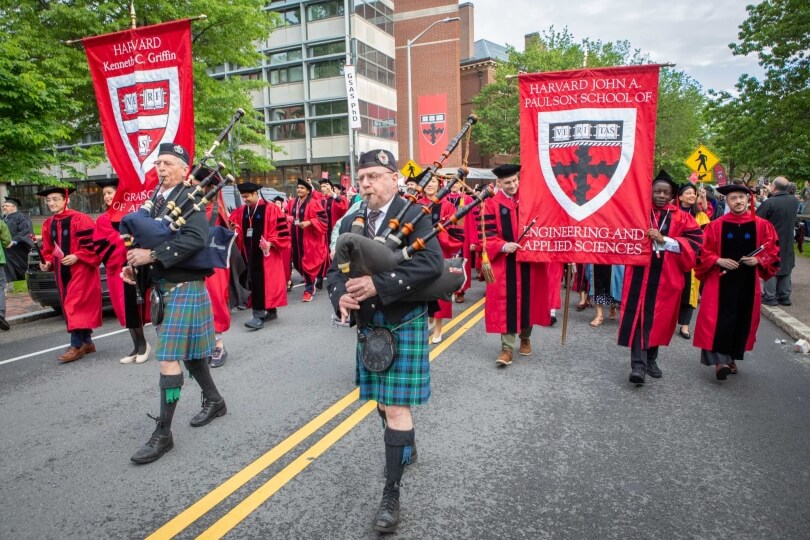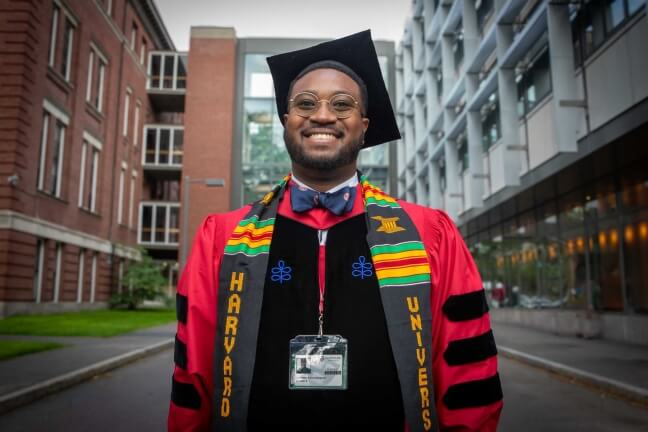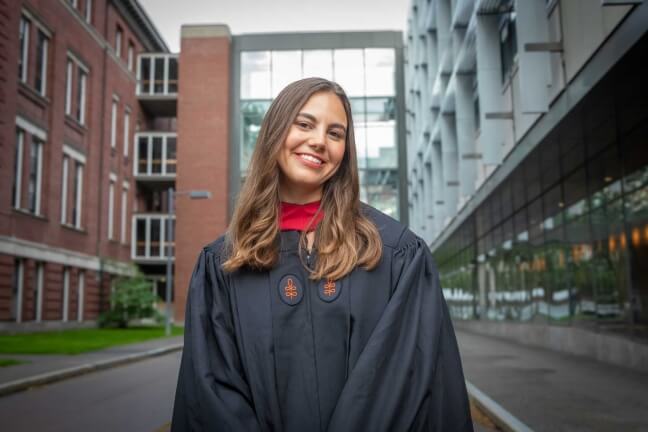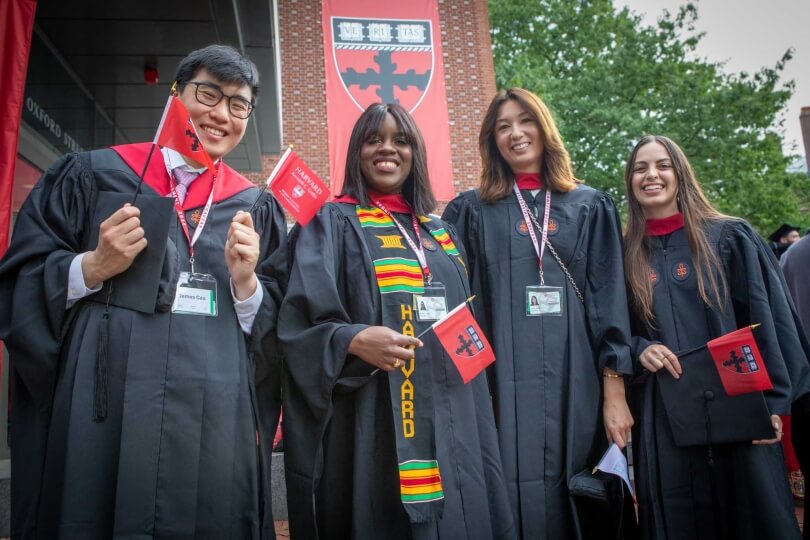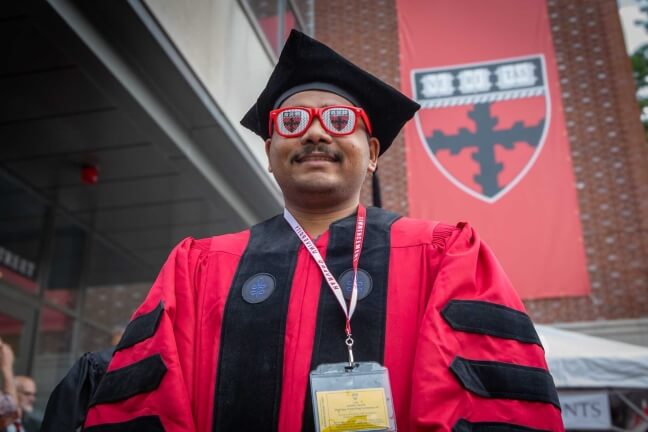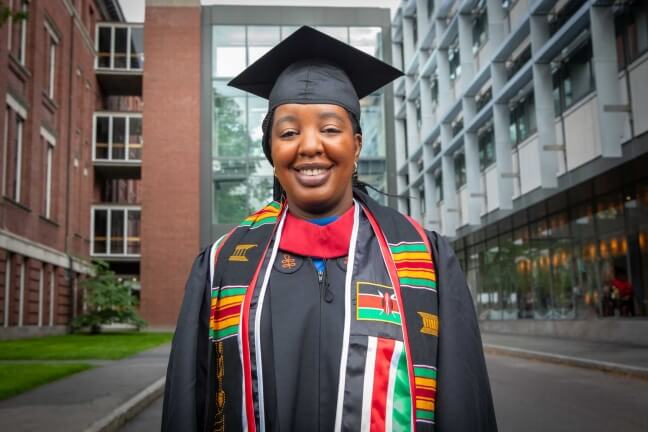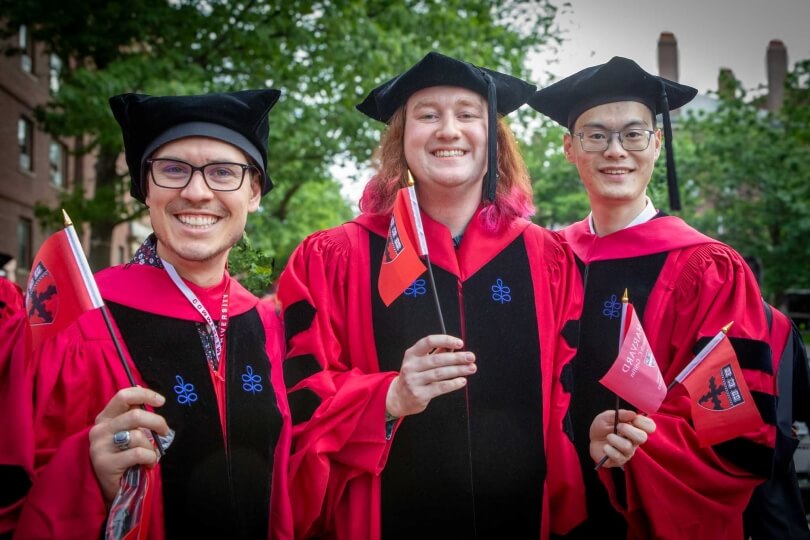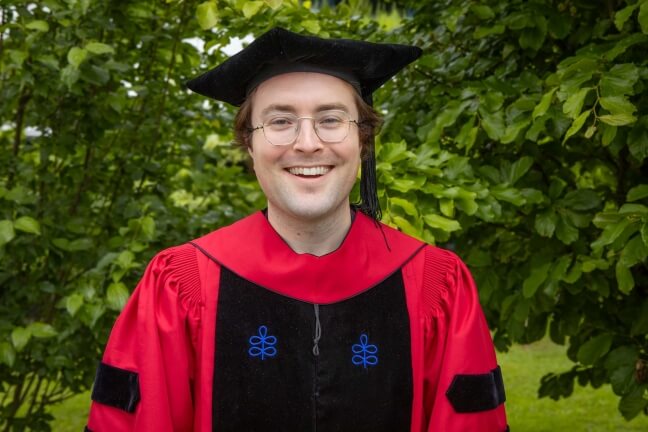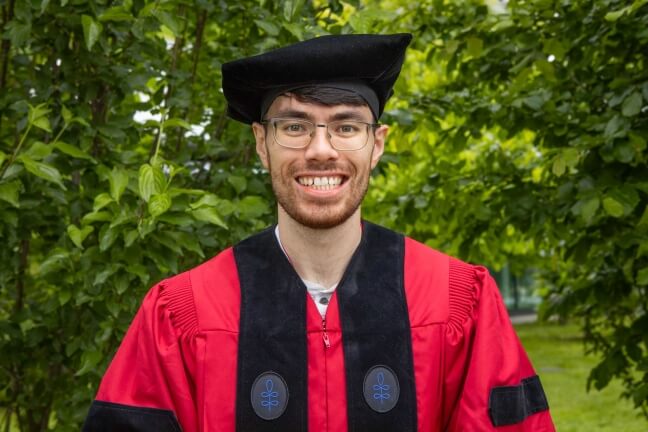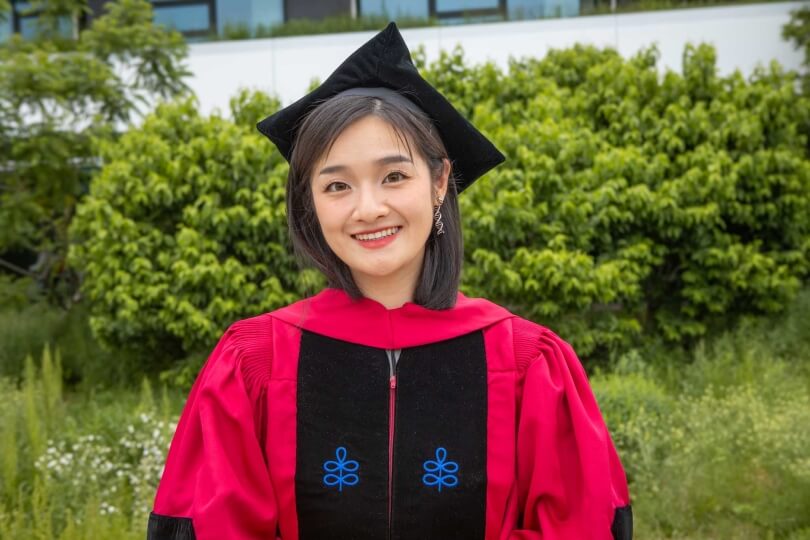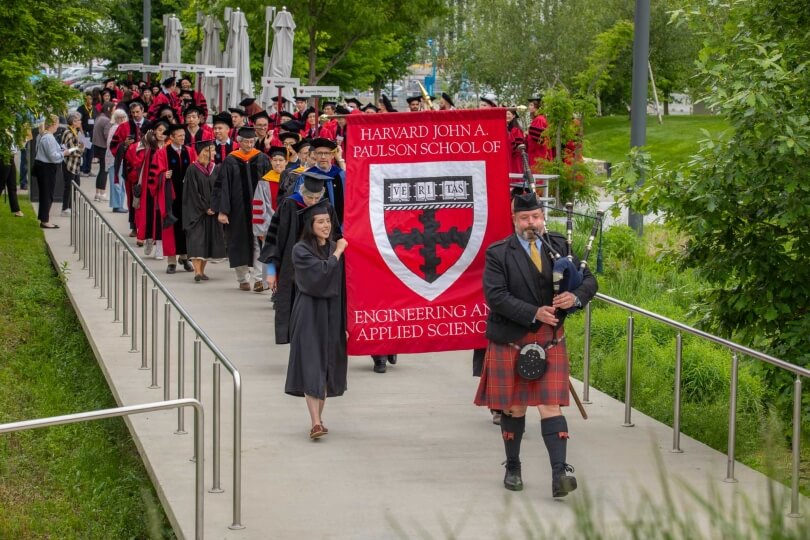News
Harvard Kenneth C. Griffin Graduate School of Arts and Sciences Ph.D. and Master's students process down Oxford Street towards Tercentenary Theater. (Eliza Grinnell/Harvard SEAS)
Check out our images of Harvard Commencement for the Class of 2025, and find out where some students from the Harvard John A. Paulson School of Engineering and Applied Sciences are going after they graduate.
"I chose Harvard because it’s so interdisciplinary. I was able to take classes at so many schools, and that gave me a more well-rounded program,

Computer science Ph.D. recipient Manos Theodosis conducted research in the lab of Demba Ba, Gordon McKay Professor of Electrical Engineering. (Eliza Grinnell/Harvard SEAS)
Applied physics Ph.D. recipient Gregory Cunningham conducted research with the Quantum Coherent Electronics Group at MIT, led by Kevin O’Brien. (Eliza Grinnell/Harvard SEAS)
Manos Theodosis, a marshal in the commencement procession, worked on theoretical deep learning during his time at SEAS, focusing on how to add constraints to neural network architectures. "I met a lot of amazing people who are going to be long-time friends, collaborators, and colleagues," he said. Theodosis plans to join a startup in San Francisco to work on geometric deep learning and cryptocurrency.
Gregory Cunningham plans to work in the nuclear or renewable energy sector. "My biggest takeaway from Harvard has been the people I’ve met — from across the world, with different viewpoints, but everyone has a big smile," he said.
Soline Boussard received a master’s degree in data science. (Eliza Grinnell/Harvard SEAS)
James Cao received a master’s degree in data science. (Eliza Grinnell/Harvard SEAS)
Soline Boussard joined the data science program to deepen her technical skills. Her thesis focused on identifying biases in large language models used as therapists. "I chose Harvard because it’s so interdisciplinary. I was able to take classes at so many schools, and that gave me a more well-rounded program," she said.
James Cao will be returning to his job at a pharmaceutical company. "I’ve met a lot of brilliant people here who were also friendly and always willing to share their advice," he said.
Master’s degree recipients (from left) James Cao (data science), Aida York (data science), Niki Ekström (data science), and Sarah Martinson (computational science and engineering). (Eliza Grinnell/Harvard SEAS)
Aida York plans to return to her job in consulting. "I loved how the program had an ethical component, how ethics relates to science." Niki Ekström will be working at an AI scale-up in Stockholm. Sarah Martinson is starting a Ph.D. in applied math with Michael Brenner, Michael F. Cronin Professor of Applied Mathematics and Applied Physics and Professor of Physics.
Bioengineering Ph.D. recipient Suyong Shaha conducted research in the lab of Samir Mitragotri, Hiller Professor of Bioengineering and Hansjörg Wyss Professor of Biologically Inspired Engineering. (Eliza Grinnell/Harvard SEAS)
Abigail Kinaro received a master’s degree in data science. (Eliza Grinnell/Harvard SEAS)
Suyog Shaha plans to join a startup in Silicon Valley focused on developing a cancer therapy drug. "The extraordinary opportunity to work within the collaborative culture of Harvard, MIT, and MGH — as well as Samir’s profile and scientific background — really drew me here. Five years in a Ph.D. program is a long time. You’re not always on your A game. Sometimes you do a bad job, sometimes you do a brilliant job. What’s remained constant is the people around me — my lab members, people at SEAS, people at the Bok Center," he said.
Abigail Kinaro plans to complete a research project that began with her capstone project, jointly supported by Harvard Law School and Harvard SEAS, examining social media privacy. She will then spend two months as a research assistant at EdRedesign, an NGO based at the Harvard Graduate School of Education, before starting a job at Palantir in New York. "Data science was very new when I came here in 2022. It’s been a really great experience being able to travel up and down the east coast for jobs, interviews and conferences," she said.
Materials science and mechanical engineering Ph.D. recipients (from left) Jordan Sosa, Tommy George, and Dawei Xi conducted research in the lab of Gene and Tracy Sykes Professor of Materials and Energy Technologies Mike Aziz. (Eliza Grinnell/Harvard SEAS)
Jordan Sosa is currently interviewing for positions in industry. Tommy George will begin a position as an assistant professor of chemistry at The Cooper Union for the Advancement of Science and Art in New York City. "I’ve been motivated by working on the climate problem and decarbonization. That motivated me to begin with, and Mike [Aziz] shares that motivation. When I joined the group, it just seemed like a really good environment to be curious and pursue questions in a creative and collaborative way," he said. Dawei Xi plans to begin a postdoctoral position at UC Berkeley with Professor Sean Butcher.
Environmental science and engineering Ph.D. recipient Drew Pendergrass conducted research in the lab of Daniel Jacob, Vasco McCoy Family Professor of Atmospheric Chemistry and Environmental Engineering. (Eliza Grinnell/Harvard SEAS)
Electrical engineering Ph.D. recipient Graham Joe conducted research in the lab of Marko Lončar, Tiantsai Lin Professor of Electrical Engineering. (Eliza Grinnell/Harvard SEAS)
Drew Pendergrass is heading to Duke University as a postdoctoral researcher. "In my Ph.D., I developed software that uses satellite observations of the environment. Satellites can measure a column of air and detect gases within it, but they don’t reveal where those gases originated or who emitted them. I built software that applies Bayesian optimization — essentially advanced statistical methods that run the data backward in time — to identify where pollution plumes likely came from. The tool can be used for any gas, and I applied it to methane, a major greenhouse gas, during my Ph.D. In my postdoc, I’ll continue developing the software to analyze nitrous oxide, another greenhouse gas that largely comes from agriculture, and investigate why its concentrations are rising faster than even our worst-case scenarios. I’ll also study other agricultural emissions to understand their sources and explore ways to improve both air quality and the climate," he said.
Graham Joe is working as a systems engineer at Nubis Communications, an optical technology startup in New Jersey. "I got the job at Nubis eight months ago and have been working there for the past six months. My title is systems engineer, so I’m mostly doing lab work. We get the products, test them, see if they’re working, debug any issues, and report back to the design teams. It’s a great time," he said.
Bioengineering Ph.D. recipient Xinge Diana Zhang conducted research in the lab of David Weitz, Mallinckrodt Professor of Physics and of Applied Physics. (Eliza Grinnell/Harvard SEAS)
Xinge Diana Zhang is working as the Head of Bioengineering at Beyond Active Ingredient Biosciences, a skincare health biotech startup, in Cambridge.
Graduate students process during the Harvard SEAS Ph.D. Hooding Ceremony.
Topics: Academics, Applied Mathematics, Applied Physics, Computational Science & Engineering, Data Sciences, Bioengineering, Computer Science, Electrical Engineering, Environmental Science & Engineering, Materials Science & Mechanical Engineering
Cutting-edge science delivered direct to your inbox.
Join the Harvard SEAS mailing list.
Press Contact
Matt Goisman | mgoisman@g.harvard.edu
